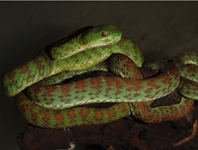Abstract
Trachysalambria aspera (Alcock, 1905) was first reported and described in detail by Alcock (1905) as Trachypeaneus asper Alcock, 1905, from the Ganjam coast (Odisha, India) and Andaman Sea. Chan et al. (2016) revised the species under the genus Trachysalambria based on molecular genetic data and resolved the confusion in their taxonomy in literature. However, they could not examine the types of T. aspera due to their non-availability (Chan et al. 2016). So we discuss the characters of the species based on the photograph of the type specimen from the Zoological Survey of India, Kolkata with that of Chan et al. (2016) and also with the specimens collected from southwest coast of India where the species has not been reported earlier, but only Trachysalambria curvirostris (George, 1967). Earlier, among Trachysalambria species, T. curvirostris was reported from both the east (Bay of Bengal) and west coasts (Arabian Sea) of Indian waters (Kunju, 1960; George, 1967; Muthu, 1971; Thomas, 1976). Chan et al. (2016) states that T. curvirostris may have a restricted distribution to northern Pacific Ocean.
References
Alcock, A. (1905) A revision of the genus Penaeus, with diagnosis of some new species and varieties. Annals and Magazine of Natural History, Series 7, 16 (95), 508–532.
https://doi.org/10.1080/03745480509443078
Burkenroad, M.D. (1934) Littoral Penaeidae chiefly from the Bingham Oceanographic collection with a revision of Penaeopsis and descriptions of two new genera and eleven new American species. Bulletin of the Bingham Oceanographic Collection, 4 (7), 1–109.
Chan, T.Y., Cleva, R. & Chu, K.H. (2016) On the genus Trachysalambria Burkenroad, 1934 (Crustacea, Decapoda, Penaeidae), with descriptions of three new species. Zootaxa, 4150 (3), 201–254.
https://doi.org/10.11646/zootaxa.4150.3.1
George, M.J. (1967) On a collection of penaeid prawns from the offshore waters of the south-west coast of India. In: Symposium on Crustacea. Part 1. The Bangalore Press, Bangalore, pp. 337–346.
Kunju, M.M. (1960) On new records of five species of Penaeinae (Decapoda, Macrura, Penaeidae) on the west coast of India. Journal of the Marine Biological Association, India, 2 (1), 81–84.
Muthu, M.S. (1971) On some new records of penaeid prawns from the east coast of India. Indian Journal of Fisheries, 15 (1 & 2), 145–154.
Sambrook, J. & Russell, D.W. (2001) Molecular cloning: A laboratory manual. Cold Spring Harbor Laboratory Press, New York, 2100 pp.
Thomas, M.M. (1974) Decapod crustaceans new to the Laccadive archipelago. Indian Journal of Fisheries, 21 (2), 339–344.


